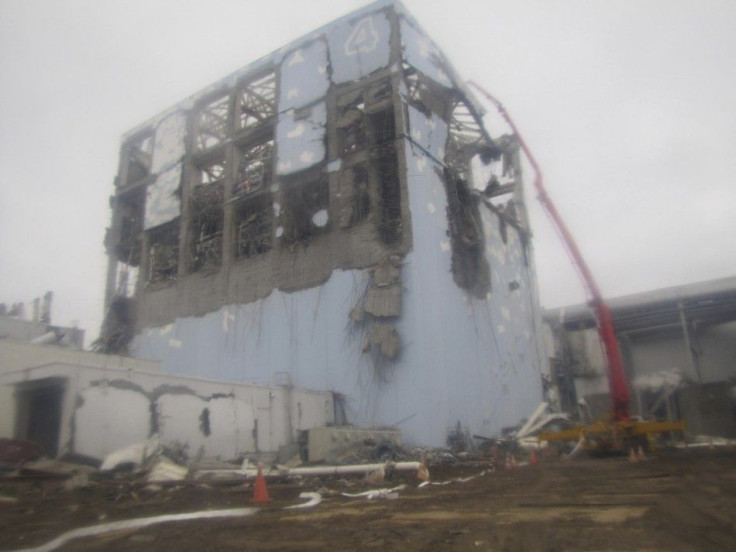Plutonium Found In Soil Near Fukushima Nuclear Plant

Tokyo Electric Power Corporation reported finding plutonium in the soil around the damaged Fukushima Daiichi nuclear power plant, giving further indications that one of the reactor cores has been breached.
TEPCO released measurements taken on March 22 that showed measurable levels of several isotopes of plutonium in the soil surrounding the plant. The data was gathered from monitoring posts in the areas on the western side of the facility, ranging from 500 meters (1,600 feet) to a kilometer (0.61 miles) away.
Plutonium is found in ordinary soil, largely because of nuclear tests in the 1950s. Plutonium has several isotopes but two - plutonium-238 and plutonium-240 - are synthetic and the products of fission reactors or nuclear explosions.
At a site about 500 meters west-northwest of the Fukushima nuclear plant, TEPCO found between 0.48 and 0.62 becquerels of plutonium-238 per kilogram of dry soil, versus 0.15 that would be present ordinarily. TEPCO workers also found between 0.22 and 0.31 becquerels of plutonium-239 and plutonium-240, where one would usually expect to see about 4.5.
Plutonium-238 (Pu-238) has the shortest half-life of the isotopes detected, at about 87 years. The other two isotopes have half-lives measured in millennia. Ordinarily one would expect to see less of it in the soil. The usual ratio is nearly ten times the amount of plutonium-239 and 240 to plutonium-238. But in some of the soil samples, there was more Pu-238. That ratio means that the plutonium found is likely from the reactor core.
Reactor number 3 uses mixed oxide, or MOX fuel, and is probably the source, officials said. That means that there has probably been some damage to the reactor containment vessel, though not enough to release large amounts of fuel.
TEPCO also said that even though power has been restored to the control rooms of some of the reactors, it is continuing to deluge the No. 1 reactor with water. The temperature of the reactor had gone up to 329 degrees Celsius by 10 p.m. Monday night Tokyo time, from 212 degrees at 6 a.m. The reactor is designed to operate at 302 degrees.
Combined with the detection of radioactive water in the basements of the turbine buildings at reactor Nos. 1 and 2, it seems clear that radioactive materials have been escaping, though it isn't always clear what the source is, says Jim Rushton, an expert in nuclear energy at the Oak Ridge national Laboratory.
Rushton notes the discovery of various isotopes of iodine is a pretty good indicator that either the spent fuel or the reactor is leaking, precisely because the half-life is measured in days. He added that there is some uncertainty in the data as one isotope that NISA and TEPCO reported finding was chlorine-38, which has a half-life measured in minutes, so it would be unlikely to appear. The other elements detected, such as radioactive lanthanum and technetium, however, are also good indications that something has happened. The question, he says, is whether the contamination is from the pools where spent fuel was stored or from one or more of the reactor cores.
© Copyright IBTimes 2024. All rights reserved.











